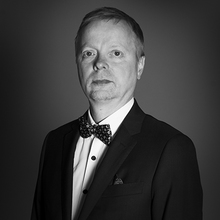Emil Österman
Emil Österman,
Signed E Österman and dated 1909 oil on canvas approx. 112x94 cm
Insignificant wear.
Provenance
Familjen
Exhibitions
A label remains on the reverse side
More information
Carl Peter Curman, born on 8 March 1833 in Sjögestad parish, died on 19 October 1913 in Stockholm, was a Swedish scientist, physician, professor, balneologist, bathhouse architect, sculptor, and draughtsman who is also known for the many historically significant photographs he took.
Carl Curman took his student examination in Uppsala in 1853 and was a student from 1856 to 1860 at both the Karolinska Institute and the Royal Academy of Fine Arts, where he studied under Carl Gustaf Qvarnström. He became a candidate in medicine in 1859 and a licentiate in medicine in 1864, and he was awarded an honorary doctorate in medicine at the jubilee celebration of the University of Copenhagen in 1879. In 1880, he was appointed as an associate professor of balneology and climatology at the Karolinska Institute. In 1869, he was awarded a professorship in plastic anatomy at the Royal Academy of Fine Arts. From 1884, he was an honorary member of the Royal Academy. Qvarnström regarded him as one of the academy's best students in sculpture. Among his early works are several sculptures with motifs from folk life and ancient Norse themes. He also created a number of portrait busts, including one of Professor Anders Retzius and a bust of Hippocrates for the Swedish Society of Medicine. He drew a long series of images of the human body intended for a textbook on anatomy, which, however, were destroyed in the fire at the Central Printing House in 1875.
Curman became a bath physician in Lysekil in 1859 and in 1863 was commissioned to organise a new bathhouse facility. From 1872 to 1888, he served as the curator of Lysekil. In 1866, he drafted the plan for a public bathing establishment in Stockholm and founded the Stockholm Bathhouse Company (establishments Malmtorgsbadet and its later branch Sturebadet) and oversaw the establishment of this project. He later also led the organisation of Stockholm's other bathing establishments. From 1876 to 1883, he was a member of the board of the Technical School in Stockholm and from 1875 to 1896, a member of the board of the Central Institute of Gymnastics.













































